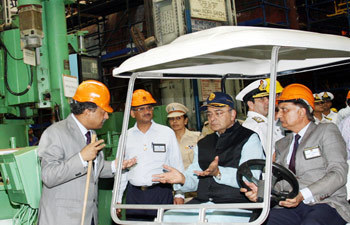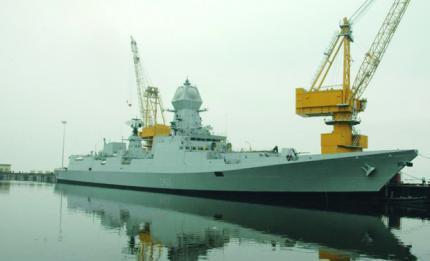Après la perte de 2 sous-marins en moins d’un an et un processus d’acquisition de nouveaux sous-marins au point mort, la marine indienne plaçait tous ses espoirs dans la construction de 6 sous-marins Scorpène, dans le cadre d’un transfert de technologies avec DCNS. Le projet est sur le point de connaître un nouveau revers conduisant à un 4è report consécutif de la livraison des sous-marins.
Le chantier naval indien Mazagon Dock Limited (MDL), qui construit les sous-marins avec l’assistance de DCNS, a déclaré que des éléments d’une importance critique devant être fournis par DCNS, n’ont pas été livrés alors que la date prévue est dépassée. Fait aggravant : les pièces attendues concernent toutes les sections du sous-marin, et leur absence devrait affecter l’avancement de la construction.
Le calendrier de livraison actuel a été fixé en novembre 2012 et les commandes de ces pièces ont été faites selon ce calendrier. Il prévoit que l’admission au service actif du 1er sous-marin doit avoir lieu en septembre 2016 et que les 5 autres doivent suivre avec un intervalle de 9 mois. C’est ce calendrier qui est maintenant remis en cause.
De son côté, MDL a terminé la construction des 6 coques et a fait des progrès dans l’équipement du 1er.
Le contre-amiral Rahul Shrawat, directeur de MDL a indiqué : « Au départ, ce projet a été retardé parce que des équipements devant être achetés par MDL ne l’avaient pas été à temps. A la suite d’une revue du projet, ce matériel a été acheté. Parmi ces équipements, certains sont arrivés, d’autres n’ont pas été livré alors que la date prévue est dépassée. Je suis forcé d’absorber les retards et, dans certains cas, je défais ce que j’ai fait parce que les pièces n’ont pas été livrées. » Il ajoute que le ministère de la défense a été informé de ce problème et DCNS a été pressée de livrer. « Si les livraisons de ces pièces interviennent aujourd’hui, je peux encore livrer le sous-marin à temps, » a-t-il expliqué. Interrogé sur l’éventualité d’une révision du calendrier de livraison, sa réponse a été : « je ne peux faire aucun commentaire tant que les pièces n’ont pas été livrées. »
Le premier des Scorpène serait prêt à être lancé en septembre 2015. Après un an d’essais, impliquant tous les systèmes dont des lancements d’armes, il devrait être prêt pour l’admission au service, soit en septembre 2016. « Les travaux se poursuivent 24 heures sur 24, 7 jours sur 7 sur le chantier, et nous sommes très motivés. Je croise les doigts, » a-t-il ajouté.
Cette semaine, le ministre indien de la défense Arun Jaitley a visité le chantier. Il n’a fait aucun commentaire sur la situation. Des sources haut placées ont confirmé qu’elles étaient informées sur le sujet et qu’elles agissaient.
India Today a contacté DCNS à Paris pour obtenir des explications sur ce retards. Ses emails sont restés sans réponse. Elle a été informée que les hauts responsables de DCNS étaient « en voyage ».
La construction des sous-marins n’est pas le seul problème
Alors que la construction des sous-marins est affectée par des retards, ce n’est pas le seul problème que rencontre le projet.
La marine indienne souhaite équiper ces sous-marins de la torpille Black Shark. Pourtant, aucun contrat n’a été conclu à ce jour. Ce blocage est la conséquence d’une escroquerie dans un autre contrat, pour la livraison d’hélicoptères. La torpille Black Shark est fabriquée par WASS, une filiale du groupe Finmeccanica, constructeur des hélicoptères en question. Ce n’est qu’au début de cette semaine que le ministère de la défense a finalement débloqué le contrat, mais il n’a pas encore été officiellement attribué.
La marine indienne souhaite aussi équiper les 5è et 6è Scorpène d’une propulsion anaérobie, qui permet au sous-marin de rester plus longtemps en plongée. C’est la Defence Research and Development Organisation (DRDO) qui a été chargée des recherches et de la fabrication, et la marine indienne reste dans l’incertitude. Des sources de la DRDO ont expliqué que « c’est un système de très haute technologie et un véritable défi. Nous y travaillons et nous espérons pouvoir respecter l’échéance fixée par la marine. »



 Your new post is loading...
Your new post is loading...









